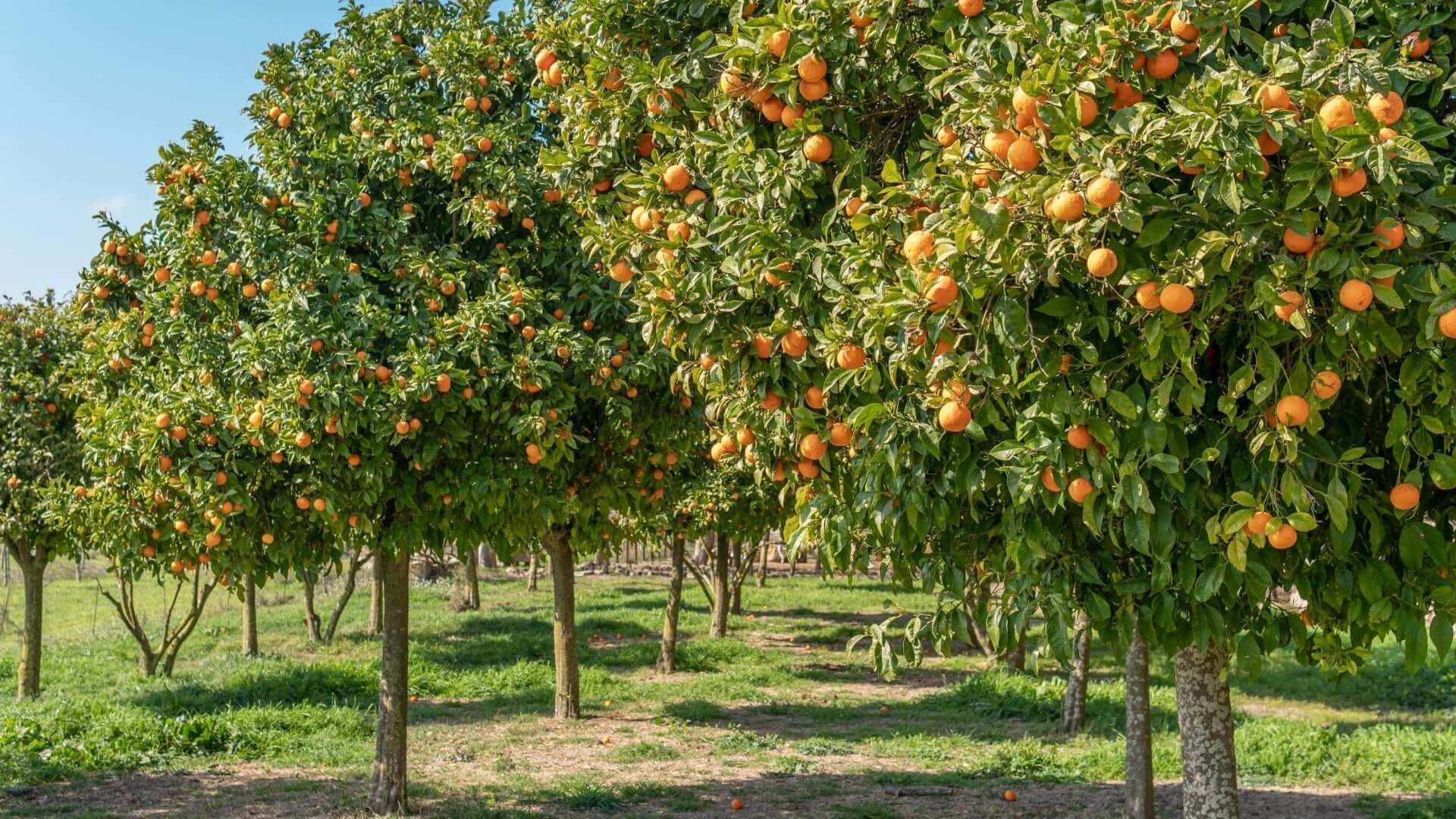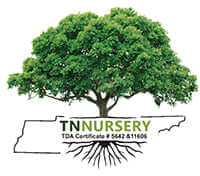How to protect fruit trees from frost

Share
It is essential to protect fruit trees from frost and ensuring a bountiful harvest and the continued health of your trees.
Ice can damage the delicate blossoms and young fruit, potentially leading to a reduced yield or even the tree's death TN Nursery has several methods and strategies to protect your fruit trees from frost., from choosing suitable tree species to implementing preventative measures and emergency frost protection techniques.
Selecting Frost-Resistant Fruit Tree Varieties It Should protect your fruit trees from frost before you plant them. Choosing frost-resistant tree varieties suited to your climate is essential. Here are some tips for selecting suitable fruit tree varieties:
Consult with Local Experts Local agricultural extension offices, nurseries, or experienced local growers can provide valuable insights into which fruit tree varieties are best suited to your region. They can recommend types with a history of performing well in your local climate.
Consider Chill Hours Chill hours refer to the number of hours a fruit tree needs to be exposed to temperatures between 32°F (0°C) and 45°F (7°C) during the winter months to break dormancy and set fruit. Ensure the fruit trees you select have chill hour requirements that align with your region's typical winter temperatures. Insufficient chill hours can lead to poor fruit production or fruit that doesn't ripen properly.
Choose Disease-Resistant Varieties In addition to frost resistance, prioritize fruit tree varieties resistant to common diseases in your area.
Healthy trees are better equipped to withstand frost and recover from its effects. Local Cultivars Native or locally adapted fruit tree cultivars are often more resilient to the specific weather conditions in your region. They may have developed natural mechanisms to cope with local frost challenges.
Site Selection and Preparation Once you've chosen frost-resistant fruit tree varieties, proper site selection and preparation are critical for their long-term survival and ability to withstand frost. Site Selection Choose a site for planting fruit trees that minimizes exposure to frost-prone areas. Low-lying areas and valley bottoms are more likely to experience cold air drainage, making them susceptible to frost pockets.
Plant your trees on slightly elevated ground. Soil Preparation Well-drained soil is essential for fruit tree health. It is necessary to amend the soil with organic matter to improve its drainage-nutrient content significantly.
Adequate soil preparation ensures that trees are less likely to suffer from root rot, a condition that can be exacerbated by frost damage. Planting Techniques Proper planting techniques, such as digging a hole large enough to accommodate the root system and planting at the correct depth, help your fruit trees establish strong roots. Strong, healthy trees are better equipped to withstand frost stress.
Frost Prevention Measures Now that you've selected suitable fruit tree varieties and prepared the planting site, exploring various frost prevention measures to protect your trees during cold weather events is time. Frost Blankets Frost blankets, also known as row covers or floating row covers, are lightweight fabrics that can be draped over fruit trees and other plants. They provide a few degrees of frost protection by trapping heat from the soil.
However, they are most effective when used in combination with other techniques. Mulching Applying a layer of organic mulch, such as straw or wood chips, around the base of fruit trees can help insulate the soil and protect the roots from extreme cold. Mulching also conserves soil moisture, which is essential for overall tree health.
Tree Wraps Tree wraps or tree guards are materials you can wrap around the tree's trunk to protect it from frost damage. They also cover rodents and other pests. However, remove tree wraps during the growing season to prevent damage to the bark. Proper Pruning Pruning your fruit trees correctly can help reduce frost damage. Prune in late winter or early spring to remove dead or damaged branches, open the canopy for better air circulation, and encourage a strong central leader (main trunk).
This helps the tree tolerate frost by reducing the surface area exposed to cold. Micro sprinklers and Overhead Irrigation Surprisingly, water can be used as an effective frost protection method. Microsprinklers or overhead irrigation systems can apply a consistent layer of water to the trees during freezing conditions. Heaters and Heat Lamps Portable heaters or heat lamps can create localized warmth for smaller orchards or individual trees.
Be cautious when using this method to prevent fire hazards and ensure proper ventilation.
Wind Machines Wind machines are large fans that circulate air to prevent frost from settling on the tree. They mix warmer air from above with colder air near the ground. Wind machines are typically used in commercial orchards but can be effective for more extensive home orchards. Thermometers and Weather Monitoring Installing thermometers in your orchard or garden helps you closely monitor temperature fluctuations. Be prepared to take action when temperatures approach freezing or when frost is forecasted.
Emergency Frost Protection Despite your best efforts, unexpected frosts can still occur. It's essential to have emergency frost protection strategies in place to minimize damage when frost is imminent.
Frost Alarms Frost alarms monitor temperature and provide alerts when the temperature approaches or falls below freezing. These alarms can help you take timely action to protect your trees.
Sprinkler Irrigation Suppose you need a permanent irrigation system; a portable sprinkler can be set up to apply a thin layer of water during a frost event. This technique works similarly to the micro-sprinkler method mentioned earlier.
Smudge Pots Smudge pots are portable, fuel-burning devices that release warm, smoky air. They create a protective layer of warm air around the tree, reducing the risk of frost damage. Use them with caution and follow safety guidelines.
Monitoring and Maintenance Regular monitoring and maintenance are essential to ensure the ongoing health of your fruit trees and maximize their frost resistance. Prune Annually Annual pruning helps maintain the shape and structure of your fruit trees. It also allows you to remove dead or diseased wood, improving overall tree health.
Monitor Soil Moisture Consistent soil moisture is crucial for fruit trees. Monitor soil moisture levels, especially during dry periods, and water as needed to prevent drought stress, which can make trees more susceptible to frost damage. Pest and Disease Management Keep an eye out for signs of pests and diseases and take prompt action to manage them. Healthy trees are better equipped to withstand frost and recover from any damage.
Maintain Irrigation Systems If you use irrigation for frost protection, ensure your systems are well-maintained and functioning correctly. Leaky hoses or clogged sprinklers can hinder your frost protection efforts.
Conclusion
Protecting fruit trees from frost requires thoughtful planning, preventive measures, and responding quickly to unexpected cold snaps. By selecting frost-resistant tree varieties, preparing the planting site, and employing various frost prevention techniques, you can significantly reduce the risk of frost damage to your fruit trees. Additionally, emergency frost protection strategies and proper tree care practices will help ensure health. Remember that local knowledge and experience are valuable resources, so don't hesitate to consult experts and experienced growers in your area for guidance tailored to your specific climate and conditions. With diligence and the right strategies, you can enjoy a fruitful harvest from your fruit trees, even in regions prone to frost.
